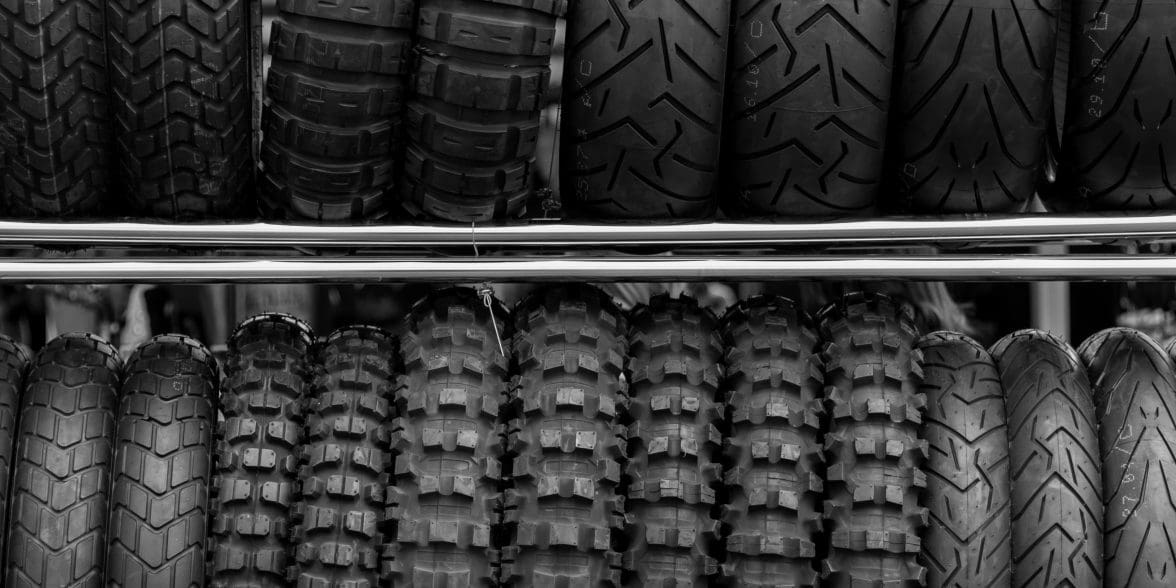Motorcycle tires are the critical connection between the bike and the road to ensure safety, stability, and optimal performance.
Selecting the right tires is essential for getting the most out of your motorcycle, whether you’re chasing speed on the track, tackling rugged terrain, or enjoying long-distance touring.
All riders will inevitably need to change their rubber once it gets worn out, and one might wonder what other options are available on the market. Can you use a touring tire on a supersport? What’s the difference between the two? Which brands are the best?
With so many types of tires available, it’s not always easy to know which one suits your needs. While we’re not here to plug any particular brand, this guide helps break down the different types of motorcycle tires to help you make the best choice for your bike and riding style.
How to Choose the Right Tire
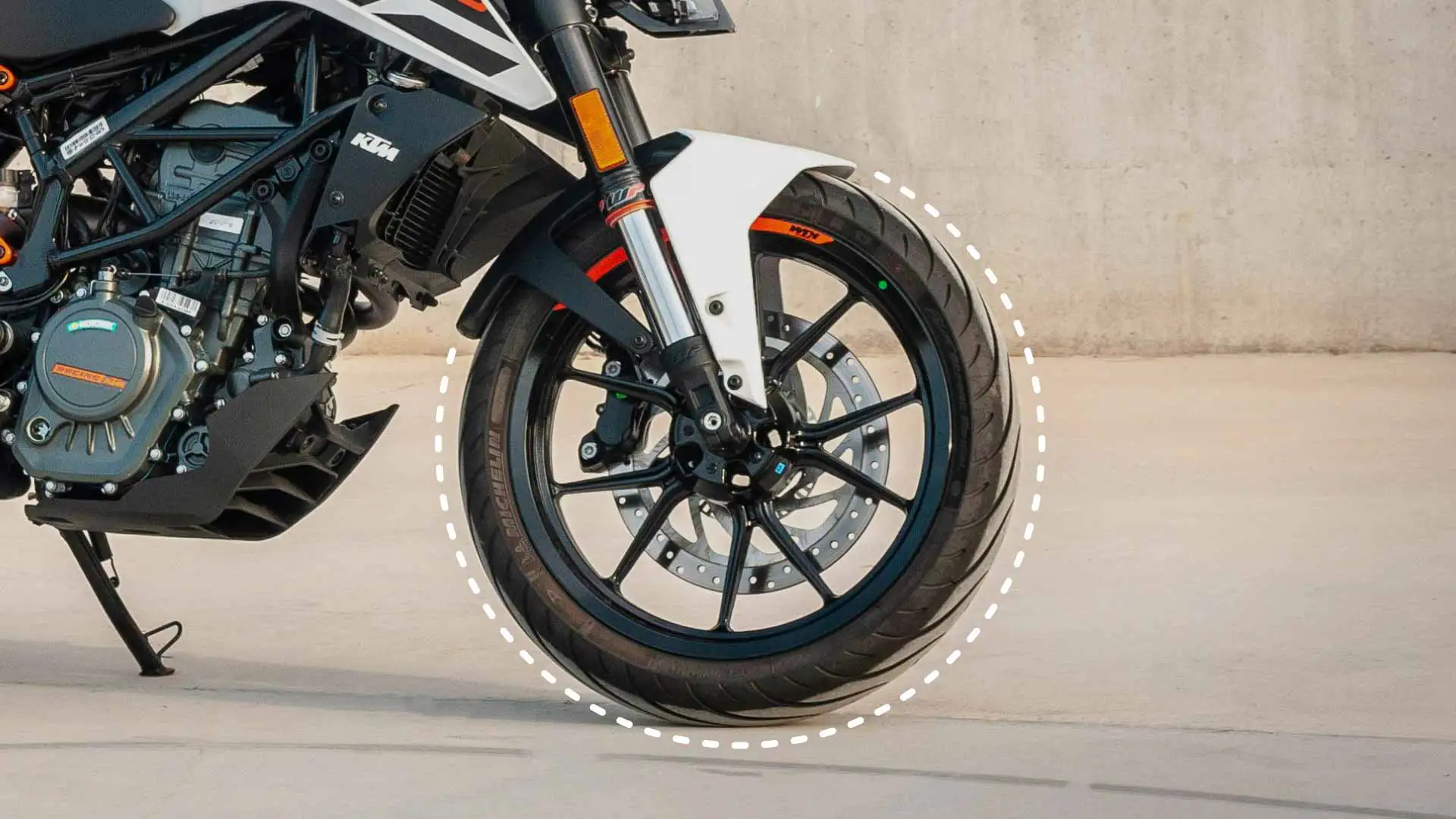
Choosing the right tire involves understanding your specific needs and how they align with the features of each tire type.
We asked tire experts NeoTires who suggested choosing a tire that is appropriate for your riding style and avoiding mismatched styles, as this can impact safety and performance.
“A quality tire is not just a component of your motorcycle. It’s a cornerstone of your safety and performance so riders should always prioritize investing in the right tire for their bike. The proper tire can mean the difference between a smooth, confident ride and avoiding unnecessary risks on the road.”
- Riding Style: Are you a speed enthusiast, a long-distance tourer, or an off-road explorer? Matching your tire to your riding style ensures safety and enhances your bike’s performance.
- Bike Type: Your motorcycle’s design and weight should influence your tire choice. For example, cruisers require tires that handle extra weight, while sportbikes benefit from softer compounds for precision.
- Terrain: Consider the surfaces you encounter most frequently. Commuters might prioritize durability and wet-weather performance, while adventure riders need versatility.
- Weather Conditions: If you ride year-round, seasonal tires or all-weather options can enhance safety in varying climates.
The Main Types of Motorcycle Tires
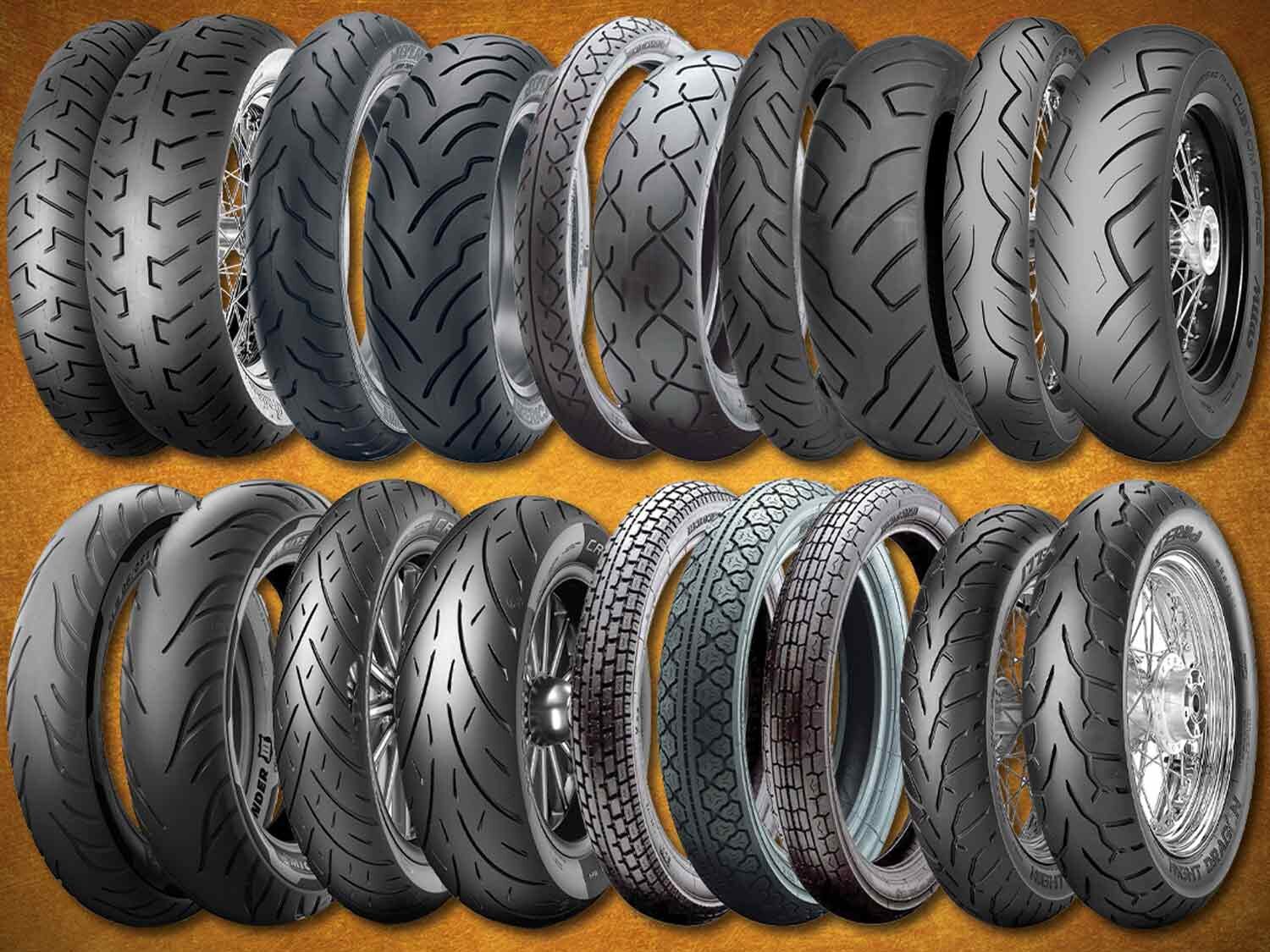
Sport/Performance Tires
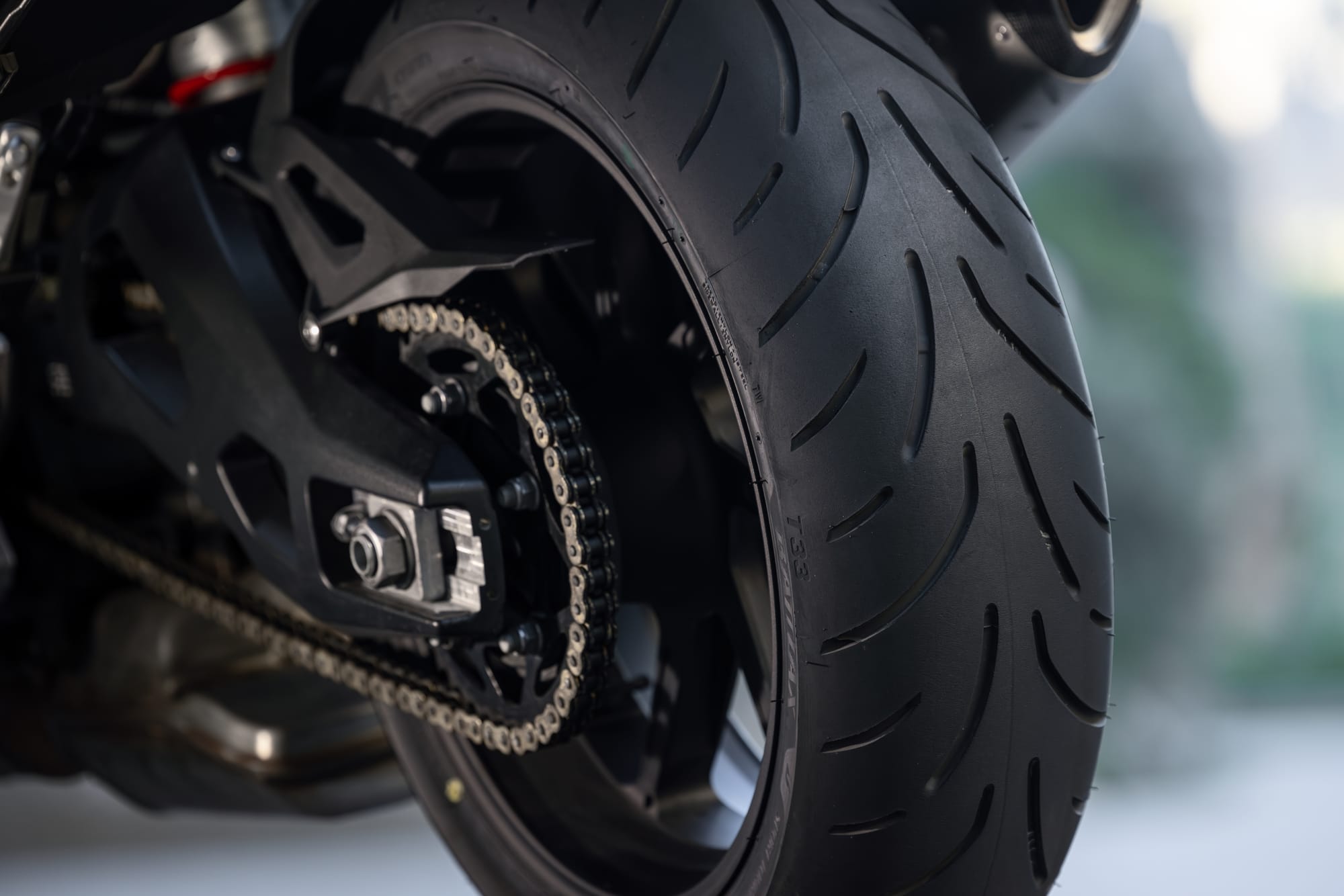
Sport or performance tires are designed for riders who prioritize speed and handling. These tires are made with softer rubber compounds to maximize grip, especially during aggressive cornering. The tread patterns are optimized for dry conditions, making them ideal for street racing or even track days.
Track enthusiasts will want to be conscientious as performance tires are sport-oriented but they’re designed for the streets.
- Key Features: Enhanced grip, quick acceleration, and precise handling.
- Considerations: While these tires offer exceptional performance, their soft rubber wears out faster than other types, and they are not ideal for wet or cold conditions.
- Who Should Use Them: Riders who enjoy spirited rides on smooth pavement or occasionally visit the racetrack.
Track/Race Tires
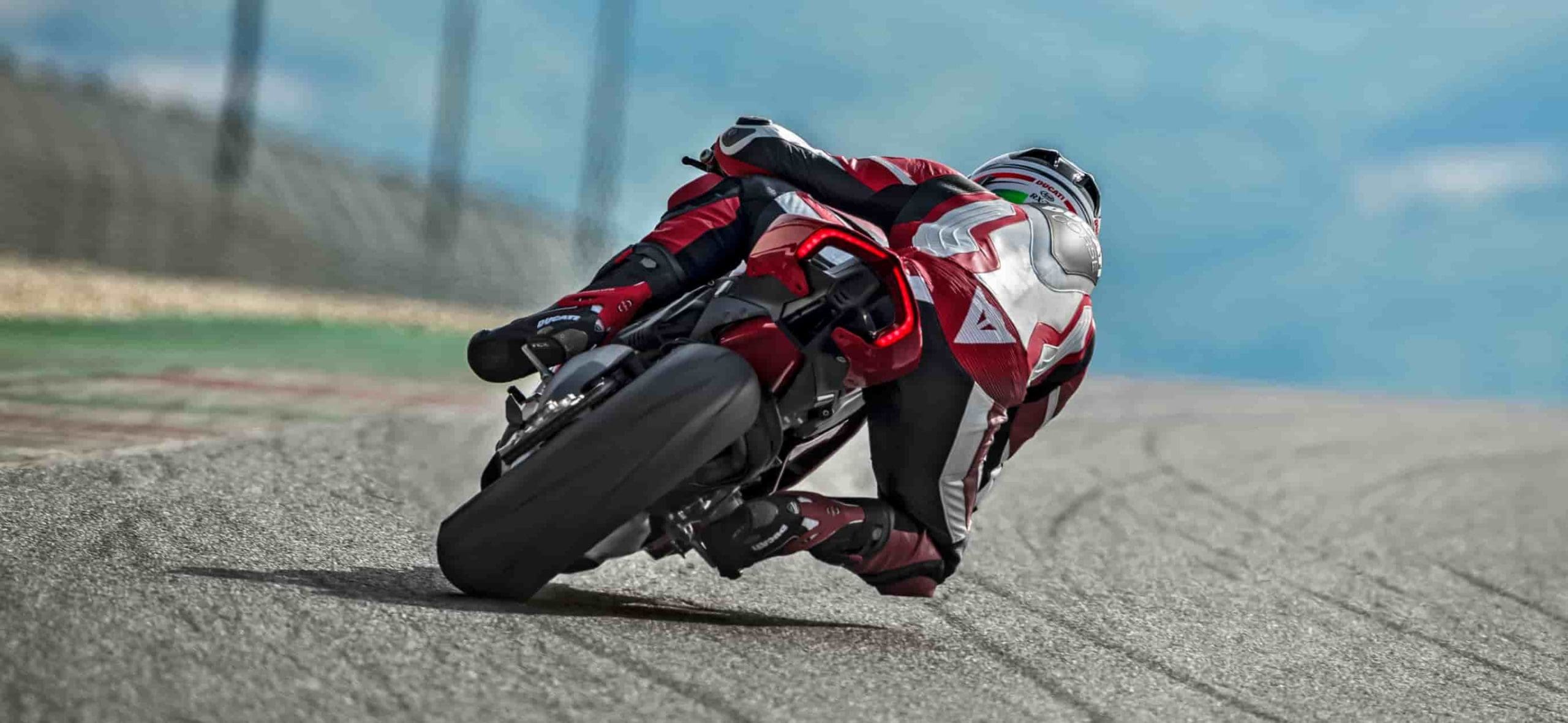
If you’re an amateur racer or a professional, you’ll want to load up a set of track tires as they are built for controlled environments. These tires offer unparalleled grip, cornering ability, and responsiveness, but they require careful maintenance and warm-up to perform optimally.
They’re a dedicated use case and if you run them on the streets, they won’t perform the same as a sport tire.
- Key Features: Sticky rubber compound, smooth tread, and maximum traction.
- Considerations: Not suitable for street use and wear out quickly under normal riding conditions.
- Who Should Use Them: Racers or track-day enthusiasts looking to maximize their bike’s performance.
Touring and Cruiser Tires
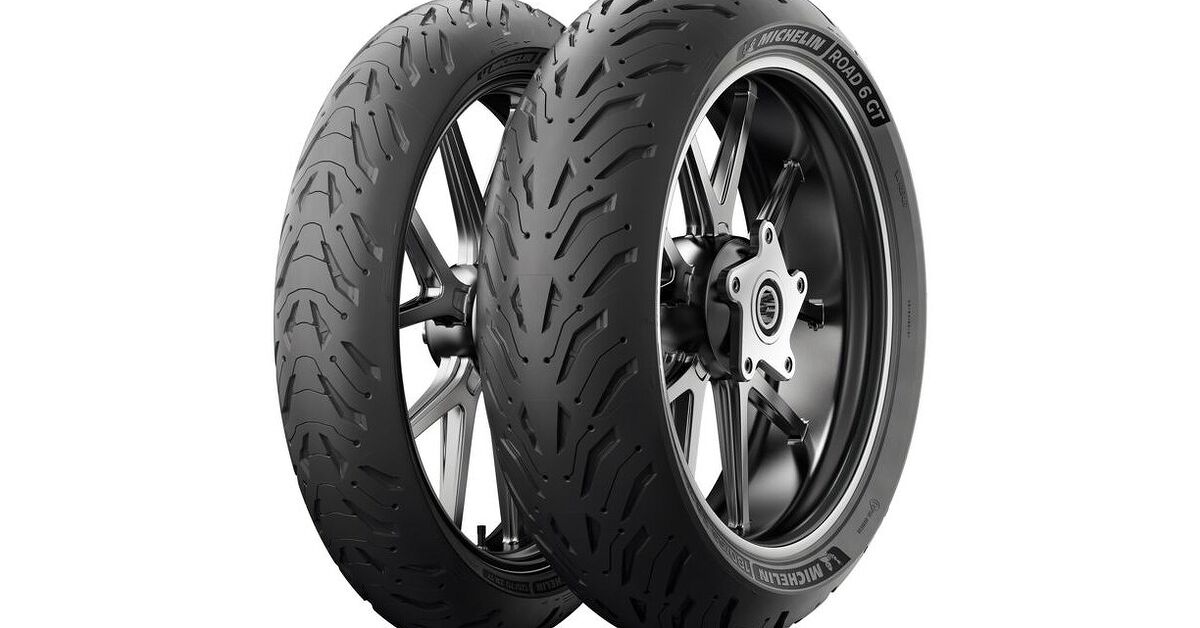
So you like to travel the road, hey? If so, touring and cruiser tires are up your alley.
Touring and cruiser tires are built for durability, comfort, and stability on long-distance rides. These tires are engineered to handle heavy loads and ensure a smooth, steady ride across various road conditions.
With slightly harder rubber compounds, they offer great mileage and a dependable grip in wet or dry weather.
- Key Features: High load capacity, excellent stability, and long tread life.
- Considerations: They prioritize comfort over high-speed handling and aren’t ideal for aggressive riding styles.
- Who Should Use Them:
- Long-distance riders who value comfort and durability.
- Cruiser riders who prioritize a steady and relaxed ride.
Off-Road Tires
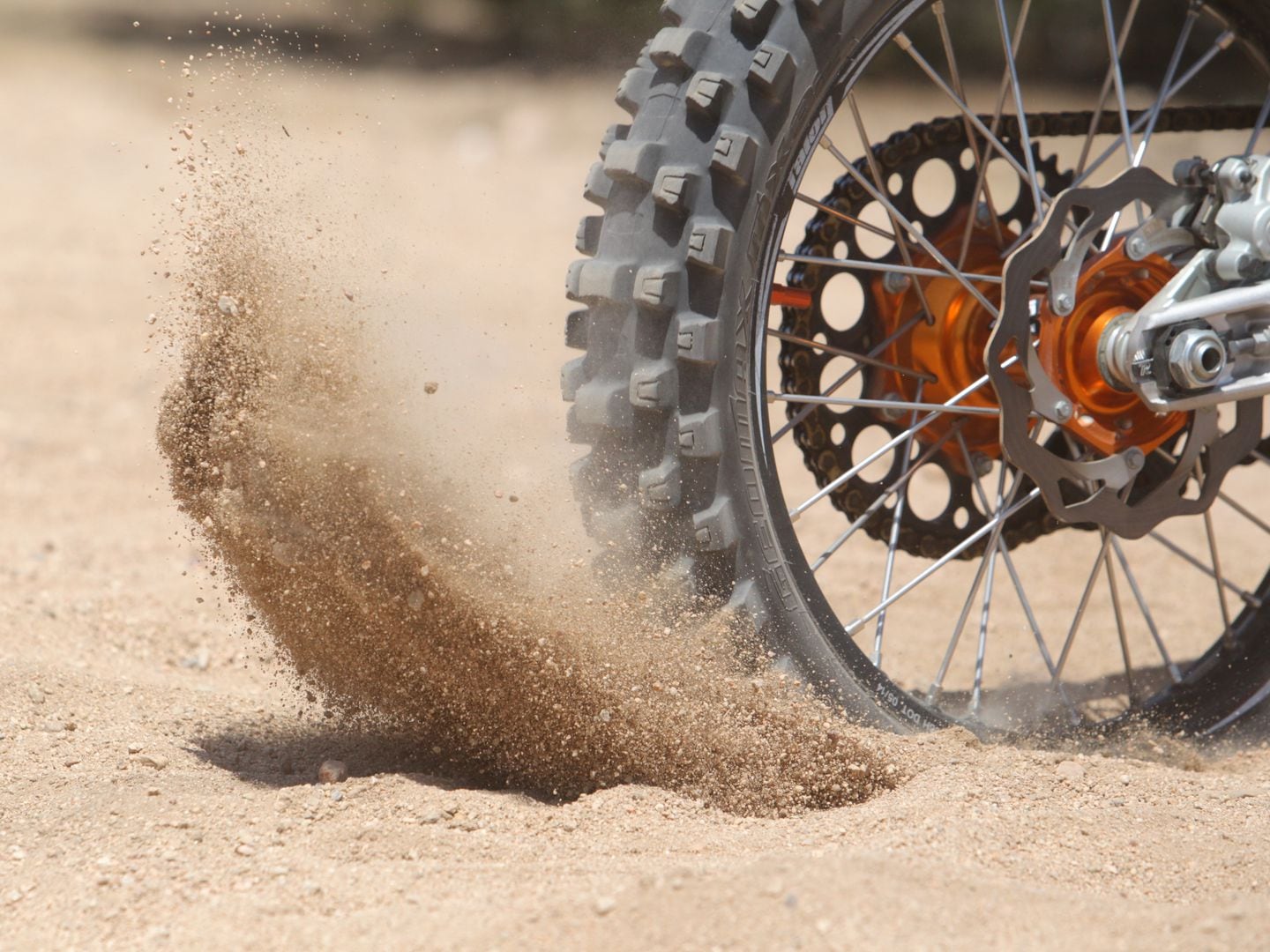
“The mountains are calling, and I must go.” – John Muir
Well, not without off-road tires, you aren’t.
Off-road tires are the ultimate choice for riders who spend their time on trails, dirt roads, or rugged terrains. You’ll want to invest in a set of these tires because they feature aggressive tread patterns that provide maximum grip on loose surfaces like mud, sand, and gravel.
The durable construction of off-road tires makes them resistance to punctures and cuts, both of which can lead you stranded in the great outdoors.
- Key Features: High durability, excellent grip in loose terrain, and reinforced sidewalls.
- Considerations: Not designed for prolonged use on paved roads, as they can wear out quickly and cause excessive vibration.
- Who Should Use Them: Riders who frequently explore unpaved trails and require a tire that can handle tough conditions.
Adventure and Dual-Sport Tires
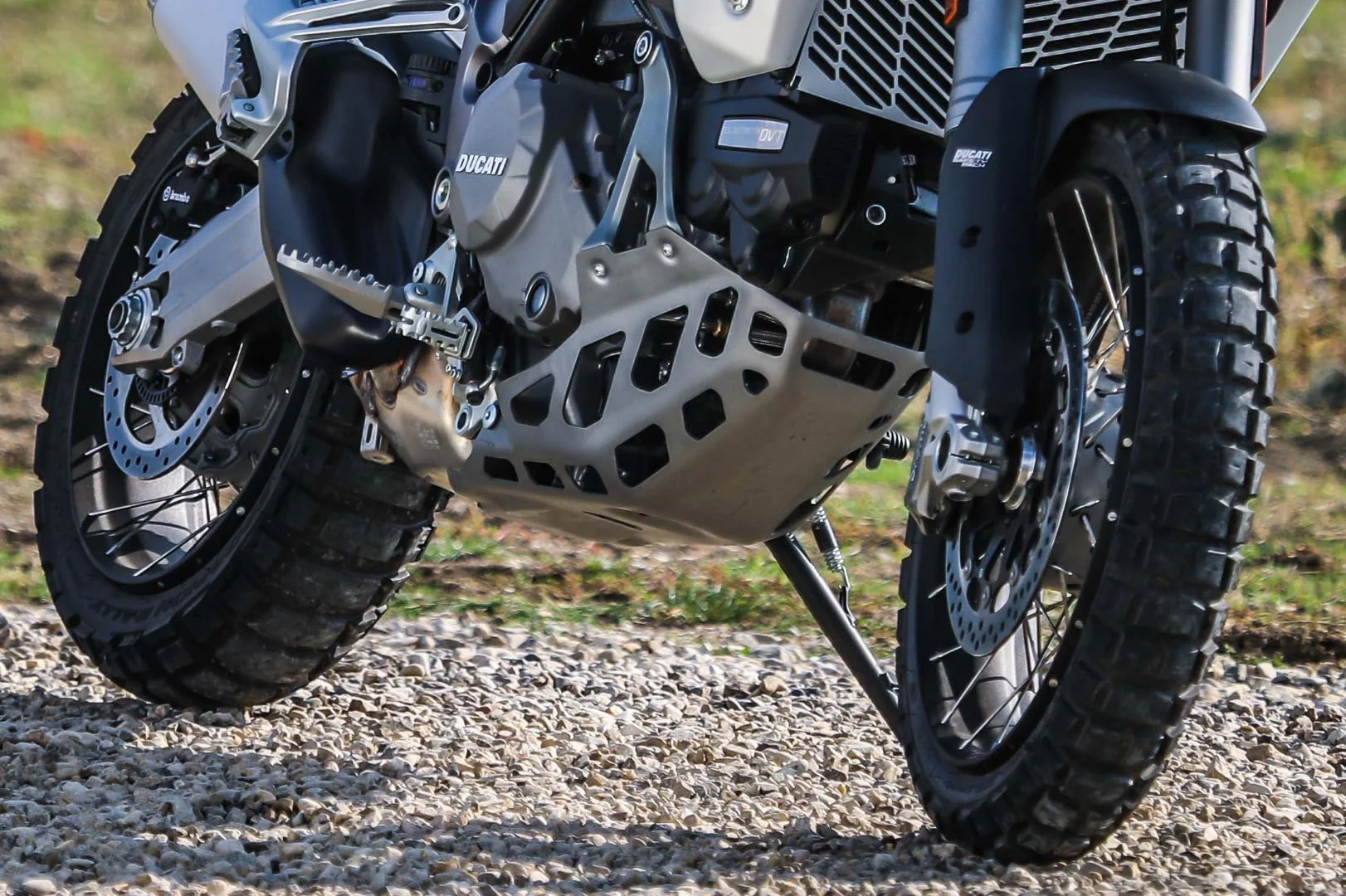
The alternative to off-road tires: adventure and dual-sport tires are versatile solutions for riders who enjoy mixing highway miles with a bit of off-road exploration, such as the Pirelli Scorpion MT90 S/T.
These tires combine the longevity and stability of touring tires with enough tread depth to handle gravel and dirt trails. Their designs offer a balance of on-road comfort and off-road traction, making them a top choice for adventure enthusiasts.
- Key Features: Moderate tread depth, versatile performance on mixed terrain, and high mileage.
- Considerations: They don’t specialize in either on-road or off-road conditions, so extreme terrains may require a more focused tire type.
- Who Should Use Them:
- Riders blending long-distance touring with off-road exploration.
- Adventure enthusiasts seeking versatility.
Winter Tires
What? Riding in the winter you say? Is that even possible?
The answer is: it depends. If you live in milder cold weather that you call winter, then yes. If you live in a locality where blizzards and snowstorms make it look like Game of Thrones, then you’re out of luck.
Riding in cold weather presents unique challenges, and winter tires are specially designed to meet them. These tires are made with rubber compounds that remain flexible in low temperatures and feature treads that enhance grip on icy or snowy roads.
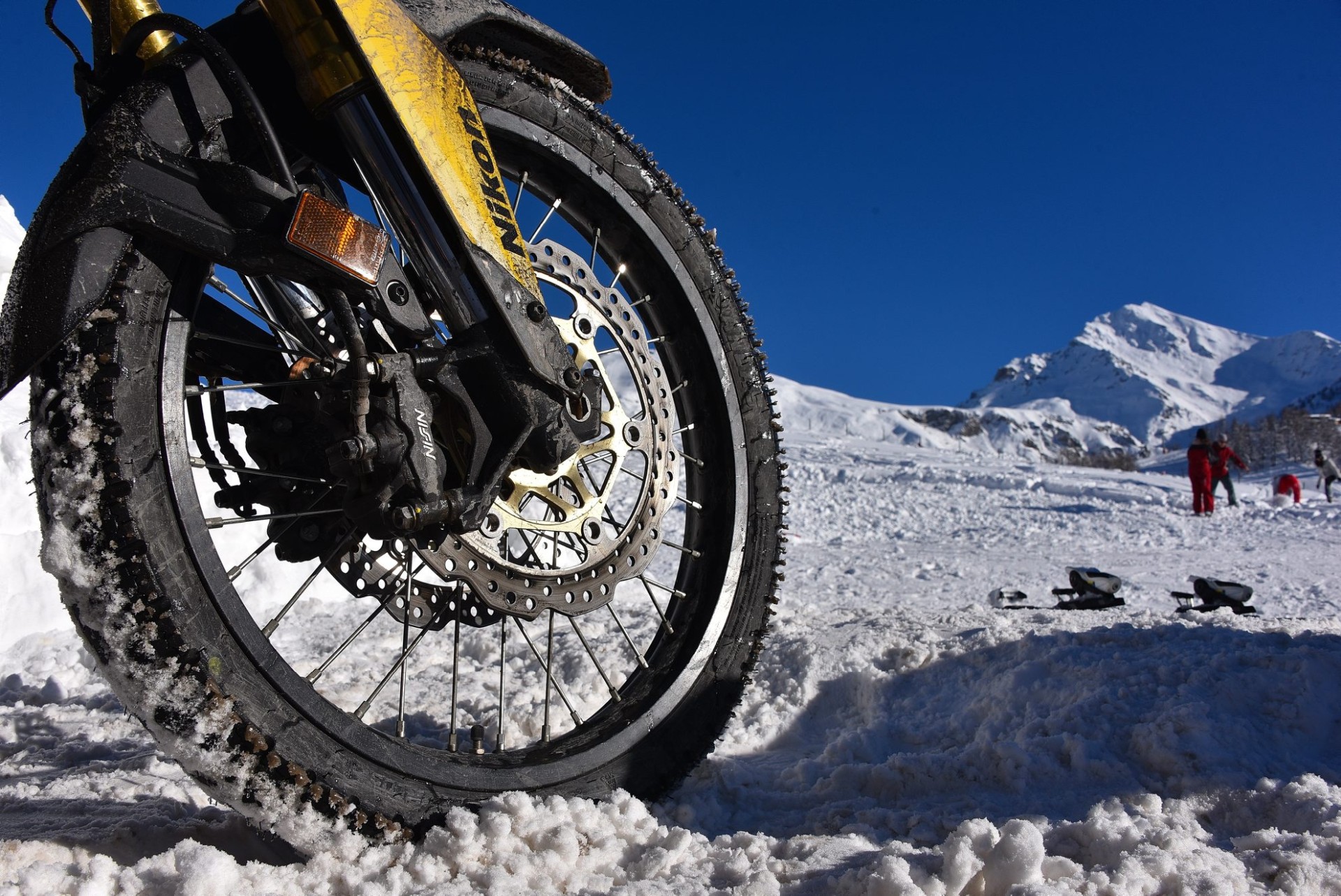
For instance, the Anlas Winter Grip Plus is a tire that was specially designed for winter conditions. However, exercise caution as riding in the winter is not particularly recommended and to use a pun, your mileage may vary.
- Key Features: Superior grip in winter conditions, increased safety in cold climates.
- Considerations: They wear out faster in warm weather and are unsuitable for year-round use.
- Who Should Use Them: Riders in regions with harsh winters who ride year-round.
Avoid Common Tire Selection Mistakes
Choosing the wrong tires can compromise your bike’s performance and safety. Here are some common mistakes to avoid:
- Ignoring Tire Ratings: Always check the load and speed ratings to ensure compatibility with your bike.
- Mixing and Matching Tires: Using different tires on the front and rear can lead to uneven performance. This is usually a likely scenario when one of the tires gets punctured and the rider wants to save money and only replace 1 tire instead of both.
- Overlooking Maintenance: Proper tire maintenance, including inflation checks and alignment, is crucial for longevity.
- Using Worn Tires: Riding on worn or damaged tires increases the risk of accidents and reduces handling precision.
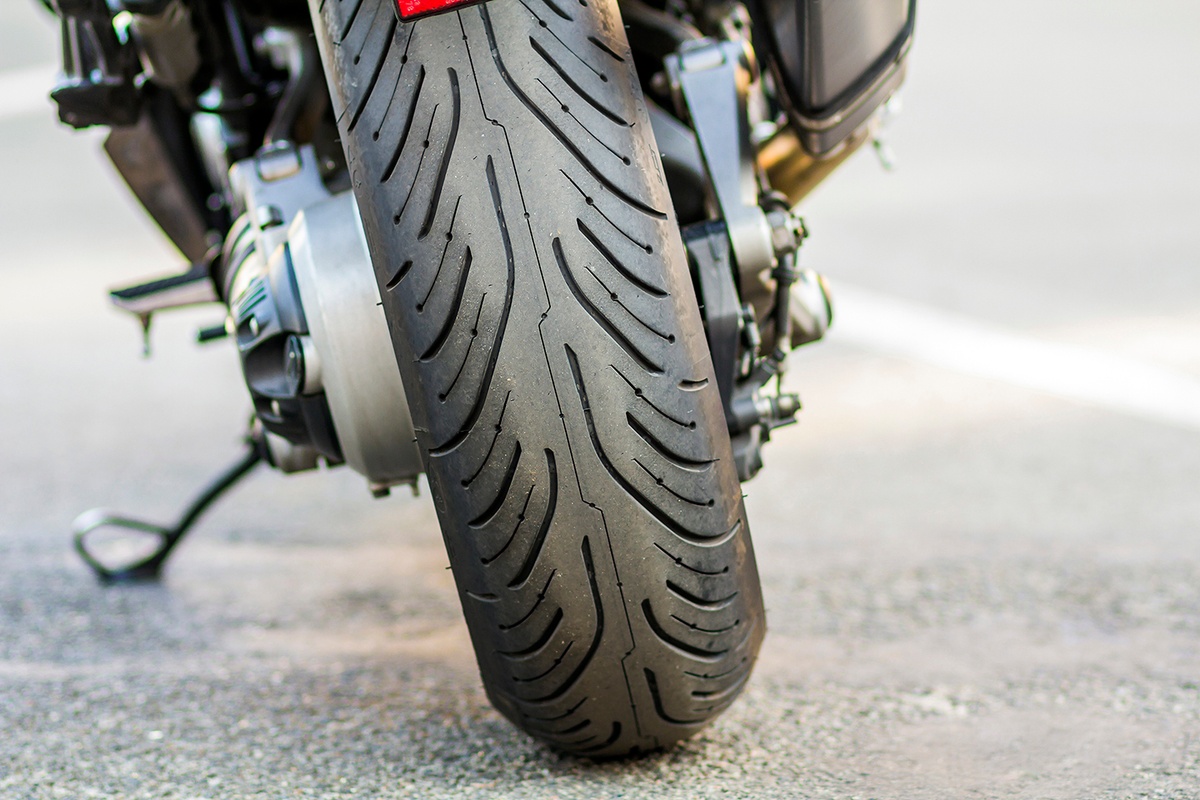
Motorcycle tires play a pivotal role in determining your riding experience, safety, and overall bike performance. Understanding the different types of tires helps you choose the right one for your needs. Whether you’re cruising, racing, or exploring off-road trails, there’s a perfect tire out there for you.


